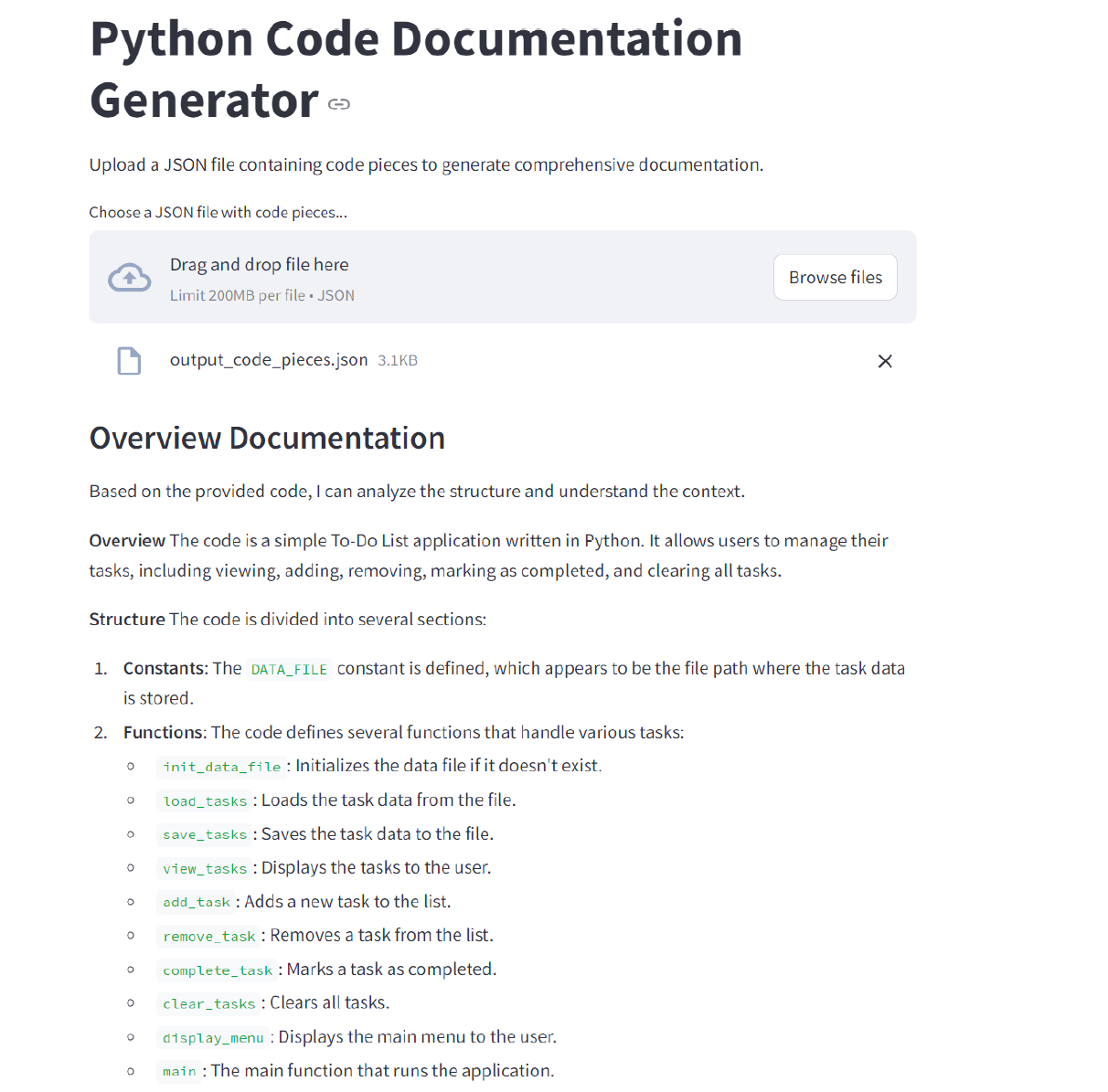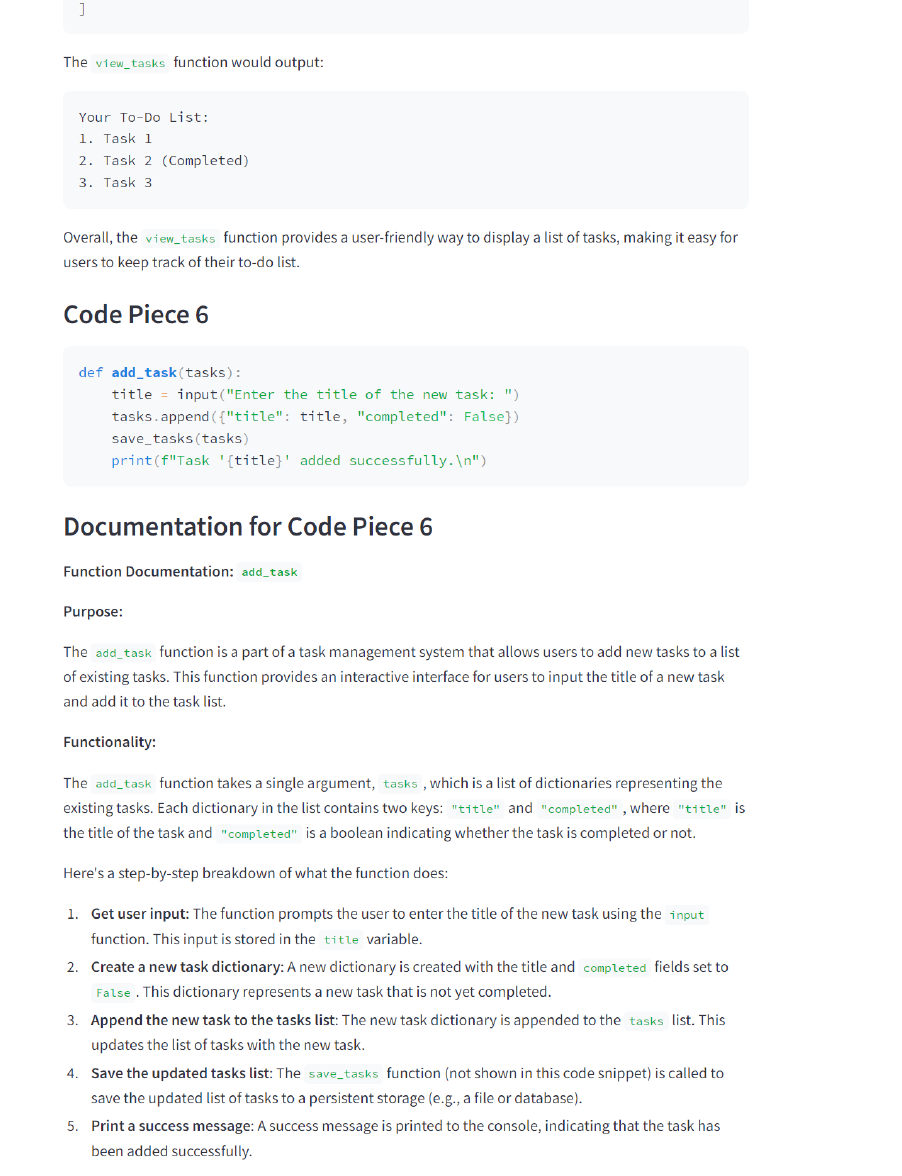Overview
This project is an automated code documentation tool designed to streamline developer onboarding and ease the transition when team members leave. It uses a large language model (LLM) to analyze source code, segment it into logical parts (functions, classes, modules), and generate human-readable documentation. It also creates a visual map showing where each function or class is defined and used, offering a quick understanding of code structure and flow.
My Role & Contributions
I led the end-to-end development of this tool, from designing the architecture to building the application interface. I implemented the code parsing logic, integrated the LLM for generating documentation, and created the user-facing interface in Streamlit. I also focused on optimizing the experience to help new developers onboard faster by minimizing the need to manually read through unstructured code.
Tech Stack
Implementation Details
The application accepts code input and uses an LLM to break it into meaningful sections (based on classes and functions). Each section is stored in a structured JSON format. Another LLM-powered process then uses these segments to generate detailed documentation for each part. Additionally, a map of the codebase is created to track where each function or class is declared and where it is used. This helps users visualize dependencies and relationships in the codebase quickly.


Results & Impact
The tool significantly reduced the time needed for new developers to understand unfamiliar codebases. It also proved helpful for existing teams during transitions, such as when a developer leaves a project. Teams reported improved clarity and fewer delays during handovers, thanks to the consistent and easy-to-navigate documentation produced by the system.
